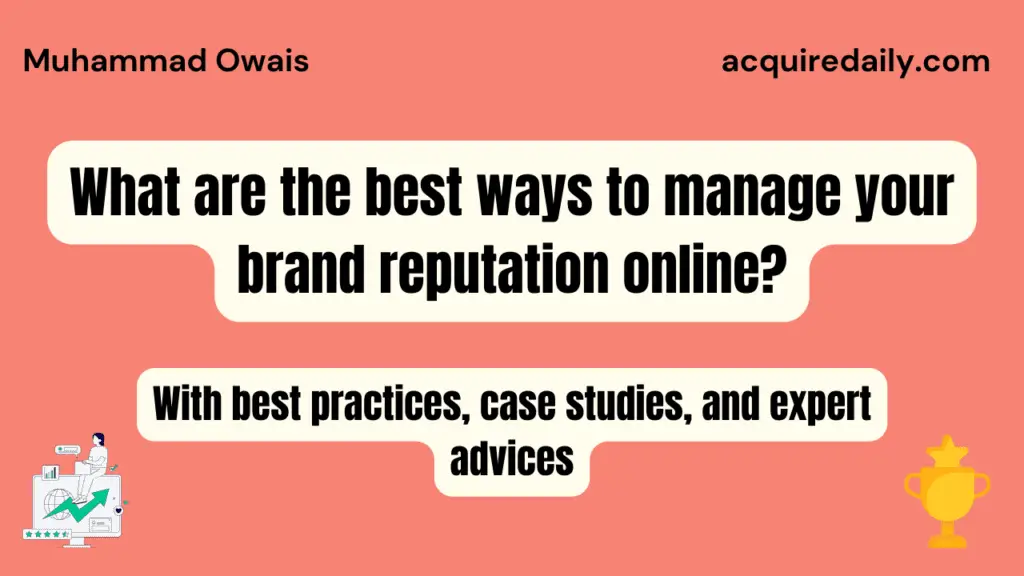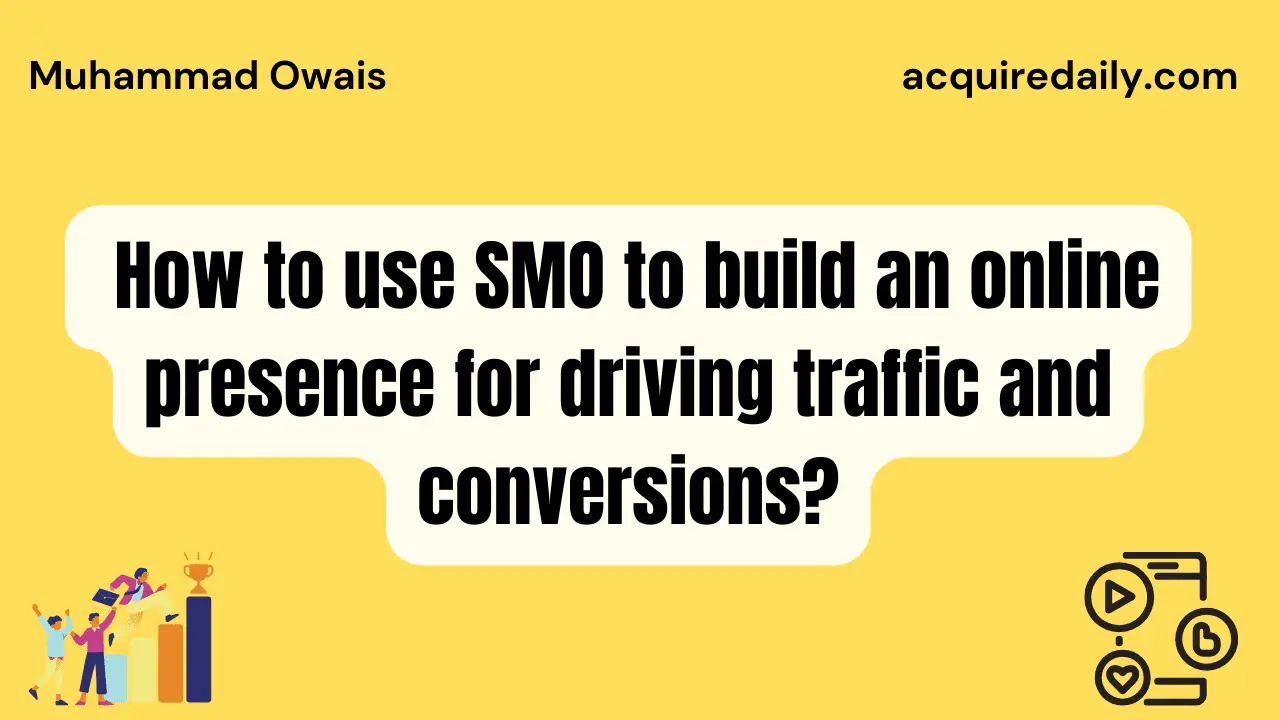In today’s digital world, your brand reputation is more important than ever. With consumers relying heavily on online reviews and social media chatter to evaluate businesses, a few negative mentions can seriously damage your brand’s credibility and bottom line.
That’s why actively managing your online reputation needs to be a priority in today’s digital world. When you put in the work to monitor brand mentions, respond promptly to feedback, and share valuable content, you can cultivate an authoritative and trustworthy presence online.
In this blog post, we’ll explore some of the best ways to manage your brand’s online reputation so you can boost credibility and consumer trust.
Table of Contents:
- Monitor Your Brand Mentions
- Respond to Feedback Promptly
- Create and Share Valuable Content
- Encourage and Leverage Reviews
- Address and Resolve Crises
- Evaluate and Improve Your Strategy
- Responding to Negative Feedback
- Leveraging Influencers and Advocates
- Measuring Online Reputation Success
- Staying Updated in the Digital Landscape
- Case Studies and Success Stories
- Key Takeaways
- Conclusion
- Expert Advices
- Frequently Asked Questions – FAQ’s
Monitor Your Brand Mentions
The first key step is to monitor your brand’s presence online. That means setting up alerts and checks on key platforms like Google, social media, and review sites to be aware of what people are saying.
There are many online brand monitoring tools you can use to streamline this process. For instance, Google Alerts allows you to receive email notifications whenever your brand, products, or executives are mentioned online.
Social listening tools like Hootsuite and Sprout Social also provide easy ways to monitor social media conversations and brand mentions. And consumer review tools like Yotpo help you track customer feedback on sites like Amazon and Yelp.
By monitoring brand mentions consistently, you can catch negative feedback early and respond quickly.
Monitoring also gives you insights into your reputation and brand perception that can inform your content strategy and marketing.
Respond to Feedback Promptly
Speed is critical when managing your reputation online. According to data from Moz, 78% of consumers expect a response to their social media complaints within 24 hours.
So have processes in place to detect and respond to feedback—especially negative reviews or complaints—as swiftly as possible. The sooner you can address someone’s grievance, the greater chance you have of turning them into a brand advocate.
Empower all employees to monitor conversations about your brand and look for opportunities to assist. Make sure negative comments don’t get lost in the shuffle by assigning someone to address complaints and concerns as their core responsibility.
As you respond, be sure to maintain a positive tone. Avoid getting defensive or argumentative. Instead, apologize for the person’s poor experience, express understanding, and offer a resolution. Your goal is to save the relationship, not “win” the argument.
Create and Share Valuable Content
Managing your brand’s reputation isn’t just about putting out fires. It also requires regularly creating and sharing content that establishes your authority and enhances your brand image.
For instance, if you run a home improvement company, share DIY tips and tutorials through a company blog. Or as a fashion brand, publish trend reports and style advice on social media. Helpful, relevant content demonstrates your proficiency and gives people reasons to talk about your brand.
Look for opportunities to repurpose content too. Turn a blog post into a video or infographic, or record a podcast expanding on a topic. Experiment with different formats and platforms to widen your reach.
Keep a regular content production schedule to stay top of mind. Promote your content through email, social posts, and paid advertising to keep reaching more consumers.
Encourage and Leverage Reviews
Consumer-generated reviews are make-or-break for modern brands. Per a BrightLocal study, 97% of consumers read online reviews before making a purchase, with 91% saying positive reviews influence their buying decisions.
That’s why you need to actively encourage satisfied customers to leave positive reviews on platforms like Yelp, Google, and Facebook. This gives potential customers social proof that you offer great products or services.
Make reviewing easy by sending customer satisfaction surveys and review links after purchases. Offer discounts or perks for leaving reviews. And respond to each review to show you care.
For negative reviews, follow up to understand the person’s experience. See if you can resolve their issue, then politely ask them to consider updating their review based on the steps you’ve taken.
Address and Solve Crises
Despite your best efforts, every brand faces PR crises and reputation issues from time to time. Complaints can go viral quickly, amplified by the power of social media.
Have a crisis management plan in place so you can address problems head-on. Be ready with templated responses and trained staff to handle the influx of attention professionally.
Bring in your PR experts to help shape the narrative around a controversy. Be transparent, admit faults quickly and fully, and correct issues. For severe crises, showing you’re taking steps to improve often matters more than the original mistake.
Aim to address crises within 12 hours or less. The longer negative narratives spread unchecked, the harder they are to counteract. So be proactive and responsive.
Evaluate and Improve Your Strategy
To refine your online reputation management, you need to regularly evaluate the success of your efforts. Set measurable goals like reducing negative brand mentions by 15% or improving average review ratings by 0.5 stars.
Tools like Hootsuite, Sprout Social, and ReviewTrackers provide analytics to assess shifts in online sentiment and conversations over time. Survey customers to gain insights into how your efforts are landing.
If you’re not seeing the desired results, change course. Boost investment in content or review generation. Try responding to complaints through different means, whether comments, private messages, or chat.
Keep optimizing your strategy until you’ve found the reputation management tactics that work for your brand. Consistency and commitment to improvement are key.
Responding to Negative Feedback
Negative feedback and complaints are unavoidable when running a business. While damaging to your brand reputation, they also provide valuable opportunities to turn dissatisfied customers into lifelong fans.
Here are some best practices to transform negative experiences into positive outcomes:
- Respond quickly – Address issues within 24 hours whenever possible. Don’t let complaints sit and fester.
- Listen empathetically – Avoid being defensive. Demonstrate you understand the person’s viewpoint and why they’re upset.
- Apologize sincerely – Admit fault and apologize for mistakes or the person’s poor experience.
- Offer solutions – Immediately look for ways to amend the situation, whether refunds, replacements, or coupons.
- Thank them – Close by thanking them for taking the time to provide feedback and for giving you the chance to correct issues.
- Follow up – Check in after a few days to ensure problems have been fully resolved and seek updated feedback.
- Learn from mistakes – Analyze complaints to spot systemic issues and implement changes that improve customer satisfaction.
Leveraging Influencers and Advocates
Beyond generating your own content, you can strengthen your reputation by partnering with influencers and brand advocates.
Influencers are prominent individuals on social media, blogs, or media outlets. When they endorse your brand, it boosts credibility with their followers.
You can work with nano or micro-influencers in your industry, which often have small but highly engaged audiences. Or pursue partnerships with celebrity mega-influencers for bigger reach.
Provide free products/services and other perks in exchange for mentions. Make sure influencer partnerships align with your brand image and voice. Require disclose of sponsored content.
Advocates are loyal customers who organically support and recommend your brand through reviews, referrals, and word-of-mouth.
Identify fans based on positive engagement and reviews. Send rewards like discounts or VIP perks to show appreciation. Share their content if they post about your brand.
Both influencers and advocates act as trusted voices that reinforce your brand’s reputation to prospective customers.
Measuring Online Reputation Success
To refine your strategy, you need to monitor key metrics that signal improvements in your online reputation.
Here are a few top indicators to track:
- Sentiment – % positive vs. negative brand mentions on social media and review sites.
- Star ratings – Average review scores on Yelp, Google, Facebook, etc.
- NPS – Your Net Promoter Score based on customer satisfaction surveys.
- Referral traffic – Volume of visitors driven to your site from social media and other sources.
- Rankings – Your brand search rankings and visibility in SERPs.
- Reach – How many people you’re connecting with through content and messaging.
- Response times – The speed at which you address feedback and complaints publicly.
Analyze which efforts best move the needle on these metrics over time. Double down on what’s working and revise what isn’t producing results.
Staying Updated in the Digital Landscape
Since online and social platforms constantly evolve, remaining updated will help you manage your reputation more effectively.
Here are some ways to stay in the loop:
- Monitor your audience and competitors to spot emerging platforms. Identify where conversations are happening.
- Subscribe to blogs/news sources focused on digital marketing and social media to learn about new features and algorithm changes.
- Follow thought leaders in your industry for insights into trends and best practices.
- Attend conferences and events to connect with experts and discuss the latest strategies.
- Take social media and online marketing courses to expand your skill set.
- Experiment with new apps and tools to become familiar with how they work.
- Set Google Alerts for your brand’s name and relevant keywords to get real-time updates.
By immersing yourself in the digital landscape, you’ll be ready to adapt your approach as needed to manage your online presence.
Case Studies and Success Stories
Seeing examples of how other brands successfully managed their online reputation provides helpful models for shaping your own strategy.
Here are a few inspirational case studies:
Domino’s – After facing backlash for poor food quality in 2009, Domino’s rebuilt trust through transparency. Their “Pizza Turnaround” campaign admitted faults, showed improvements to recipes and ingredients, and engaged with customers online. This authenticity led to a 14% sales increase.
JetBlue – During a 2007 ice storm that grounded its planes, JetBlue leveraged YouTube and their blog to provide constant updates and apology videos. Their clear, humanized communications minimized the PR crisis.
Le Pain Quotidien – To counteract fake and inaccurate reviews on Yelp, the restaurant chain created an authenticity campaign. They engaged satisfied customers on social media and emailed invites to post reviews. In a year, their rating improved from 2 to 4.5 stars.
Luxy Hair – When targeted by reputation sabotage and false accusations in online forums, Luxy Hair used influencer partnerships and compelling video content to drown out misinformation. They creatively turned brand critics into supporters.
Key Takeaways
- Actively monitor your brand’s online presence and mentions. Be aware of what people are saying.
- Respond to feedback and complaints quickly – within 24 hours whenever possible.
- Create and share valuable, relevant content that establishes your brand’s authority and expertise.
- Encourage satisfied customers to leave online reviews to build social proof.
- Have a crisis management plan ready to address reputation issues head-on.
- Set goals and track metrics to evaluate and optimize your online reputation efforts.
Conclusion
Vigilantly monitoring your online reputation, addressing feedback quickly, and sharing helpful content pay major dividends for establishing credibility. With consumers relying so heavily on reviews and social proof, brands must be proactive to manage their image.
Make online reputation management a top priority in today’s digital world. Defining processes and designating staff to oversee your brand presence is key. Set goals for improving sentiment and commit to evolving your strategy based on data.
With consistent effort, you can turn customers into advocates who reinforce your brand’s reputation as an authoritative industry voice. Their trust and support provide social proof that drives conversions with new audiences.
Focus on transparency, authenticity, and valuable content above all else. By putting your customers first and managing crises head-on, your brand’s reputation will become an asset that fuels sustainable growth.
Expert Advice
Advice #1: CRUCIAL: Even if you are a Solopreneur, set up Google alerts for yourself and your company so you are on top of it. Google allows you to set many alerts for free and you can go really ninja with it such as “your company + name of a publication” or any detailed combination you’d like! The great thing about it is that you also get nice Surprises like I had when I realized I was quoted positively in Forbes and Newsweek for my knowledge. There are more sophisticated, paid tools you can use to set up alerts but if you are an SME, Google Alerts is good enough.
NINJA TIP: Either you build your Brand Image or others do it for you. You might as well be the one who decides! Video is best, as it’s personal. People get a better feeling about who you are. This is even more important now that there is so much AI-generated content. Video will make you stand out big time. 2nd important element: Share PERSONAL stories. Most ppl stick to business content, when that’s not what builds a connection with others. You want to evoke feelings in them so they will feel like following you and supporting you… Share your failures and weaknesses openly and see how people connect with you at a deeper level. From Yesim Saydan – WSJ, Forbes-featured AI & LinkedIn Strategist.
Advice #2: As an entrepreneur, one of the things that helped boost the online brand reputation of my e-commerce store was to be placed in trusted holiday gift guides and gain visibility in articles. One of the most valuable tools I have found in this regard is the HARO (Help A Reporter Out) newsletter of media opportunities. Like many starting out, I was unable to pay for a publicist to do the legwork of landing opportunities for myself. So, I subscribed to the sections that made the most sense for my desired audience and took the time to craft a personal pitch for the placements I wanted to pursue. It’s a free service and you can select the frequency of when you want to receive the emails. From Suncera J. – Marketing and Advertising Specialist.
Frequently Asked Questions – FAQ’s
Question: Why is online reputation management important?
Answer: Your online reputation heavily influences consumer trust and purchase decisions in the digital age. Proactively managing it builds credibility.
Question: How often should I monitor brand mentions?
Answer: Ongoing monitoring through tools and alerts is ideal. At a minimum, check key platforms daily for relevant brand mentions.
Question: What should I do when we receive negative feedback?
Answer: Respond professionally and empathetically within 24 hours. Apologize for the person’s poor experience and offer solutions.
Question: How can I get more positive online reviews?
Answer: Survey satisfied customers and send review requests. Offer incentives for leaving reviews. Make the review process quick and simple.
Question: What should I do if false negative information about my brand starts spreading online?
Answer: Address misinformation transparently through statements. Provide facts and your side of the story. Use influencers and advocates to share authentic positive perspectives.
You May Also Like
How To Measure Social Media Success Without Vanity Metrics?
5 Tips How To Make A Successful Business Plan And Pitch Using Today’s Best Practices?








